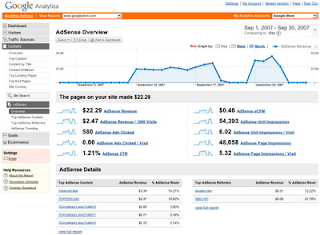
Payments Guide
Are you wondering when your AdSense payment will arrive? Trying to figure out whether you'll be paid this month, or next month? We've put together this guide to explain our payment process - from the five critical steps to setting up your account, to an overview of the life of a payment, everything you need to know is here.
1. 5 Steps to Getting Paid
2. Tracking Earnings
3. Payment Timelines or, "When am I paid?"
4. Holding Payments
5 Steps to getting paid
You must complete all the steps below to get your account set for your first AdSense payment. Keep in mind that your earnings will need to reach the appropriate thresholds before you can provide your tax details, select a payment method, and enter your PIN or phone verification number.
1. Check your address
Since payments and Personal Identification Numbers, which we'll describe below, are sent to the mailing address in your account, it's important to confirm the accuracy of your payment address and payee name. Keep in mind, especially, that checks and Western Union payments are made out to the payee name exactly as entered in your account.
If you need to correct any information, follow the instructions in our Help Center.
2. Provide your tax information
Depending on your location, we may be required to collect tax-related information from you. If you're required to provide tax information, you can do so on the Tax Information page, under the My Account tab. Our interface will help guide you to the appropriate forms and requirements for your particular situation.
Go to your Tax Information page now
3. Select your payment method
Depending on your payment address, there may be a number of payment options available to you, including checks, Electronic Funds Transfer, and Western Union Quick Cash. The easiest way to find out your payment options is to visit your Account Settings page and click the Payment Information [edit] link.
If you're already an approved publisher, choose your payment method now
4. Enter your PIN and phone verification number
When your earnings reach the verification threshold, we'll mail a Personal Identification Number to the payment address in your account. You'll need to enter this PIN into your account before we can send any payments to you. Your PIN will be sent by standard post and will take 2-3 weeks to arrive.
Depending on your location, you may also be asked to verify your phone number. As part of this process, our system will call you at a pre-arranged time, and you'll be required to dial in a verification number that appears in your AdSense account.
5. Reach the payment threshold in earnings
When your total unpaid earnings reach the payment threshold, we'll send you a payment at the end of the next month. This threshold varies depending on the reporting currency in your account.
Let's say, for example, that the payment threshold for your account is US$100. In this case, if your total unpaid earnings reached $100 during January and you completed the 4 steps above, we would send you a payment at the end of February.
If your total unpaid earnings haven't yet reached the payment threshold, they'll roll over to the next month and accrue until they meet the threshold.
Payments are sent within approximately 30 days of the end of the month. See the timeline of our payment cycle in the Payment Timelines section below.
Tracking Earnings
You can track your AdSense performance and earnings from the Reports tab of your account. The Reports tab includes two important sub-tabs: Overview and Advanced Reports, which will display day-to-day details about how much you're earning from AdSense. There's also important information included in the Payment History page, which is linked from the Overview as well as the My Account tab.
The Payment History page tracks the status of previously issued payments, as well as monthly account calculations. You can click the Earnings details link for any month to view your total earnings, as well as any adjustments made to your account. Once you've qualified for a payment, and your payment has been made, you'll see it listed on this page as Payment issued. Click on the link to see the payment details as well as the exchange rate used to calculate your local currency payment, if applicable.
Back to top
Payment Timelines or, "When am I paid?"
One of the most common questions we receive at AdSense support is, "when am I paid?" It's certainly an appropriate question, since you probably joined AdSense to earn money and not just because you like how pretty our ads are. So this section describes how the AdSense payment cycle operates throughout the month, to give you a good idea of when and how your payment will arrive.
Earnings calculated: On the last day of each month, our system identifies all accounts that have reached the payment threshold. All the accounts that have reached the threshold are then sent for approval. Within the first few days of the month, a link with specific earnings details will be posted to your Payment History page within the first few days of the month.
Payment issued: Within the next few weeks, a Payment issued line will be posted to your Payment History page, indicating your payment has been calculated. At this time, we'll have your payment processed and sent to you.
Payment arrives: The time it takes for your payment to arrive depends on form of payment you have selected.
* Standard delivery checks: generally arrive within 1-2 weeks of the mailing date in the U.S.; outside of the U.S. typically arrive in 2-3 weeks.
* Secure Delivery checks: generally arrive in 5-7 days.
* EFT payments: should arrive in your bank account within 2-4 days.
* Western Union Quick Cash payments: available for pick-up at a local agent the following day.
* Rapida payments: available for pickup at your local post branch two business days after they are sent.
If there are any problems with your payment, a notice will be posted on your Payment History page. If you haven't received your payment by the 25th of the next month, you can request a reissue.
Holding Payments
If you'd prefer not to receive payments for a while, we're happy to hold payments for you. Just set up a payment self-hold in your account.
Setting a hold will stop payments and your account will continue to accrue earnings. After you remove your hold, we'll send you a single consolidated payment for all your unpaid earnings. To set or remove a hold, follow these instructions.
Please note that all changes to your hold preferences should be made by the 15th of the month. Changes made to these settings after the 15th of the month may apply to either the current or next payment cycle.






